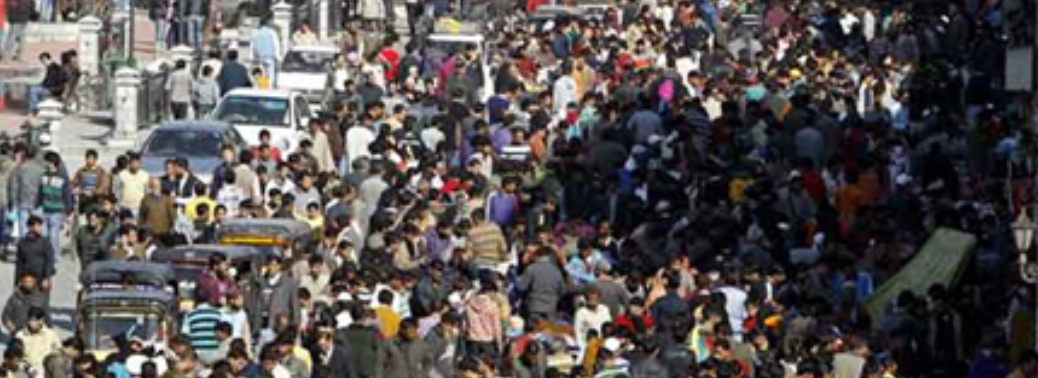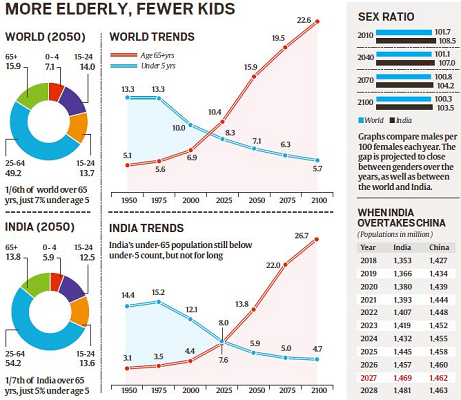WORLD POPULATION PROJECTIONS 2019
02, Sep 2019

Prelims level : Reports & Indices
Mains level : GS-I- Population and associated issues
Why in News?
- World Population Prospects 2019 was released few weeks back by the Population Division of the UN Department of Economic and Social Affairs.
Global Population Trend:
- While the report projects the world population to some 9.7 billion by 2050, it says the overall growth rate will continue to fall.
- The next 30 years will see the population add 2 billion people to today’s 7.7 billion, and reach 11 billion by the end of the century.
- The countries expected to show the biggest increase are India, Nigeria and Pakistan. However, fertility rates are falling worldwide.
- The average number of births per woman globally, from 3.2 in 1990, fell to 2.5 by 2019, and is projected to fall further to 2.2 births by 2050.
- To avoid decline in a national population, a fertility level of 2.1 births per woman is necessary (in the absence of immigration).
- In 2018, for the first time, persons aged 65 years or over worldwide outnumbered children under age five.
- Projections indicate that by 2050, there will be more than twice as many persons above 65 as children under five.
- By 2050, the number of persons aged 65 or over will also surpass the number of adolescents and youth aged 15-24.
- In India, children under age five still outnumber the over-65 population, who are projected to overtake the under-five group between 2025 and 2030.
- By 2050, persons over age 65 will make up about one-seventh of India’s population.
- By then, the 15-24 group in India (13.8%), too, will outnumber the over-65 group (13.6%).
- Children under age five are projected to constitute less than 6% of India’s population in 2050, as compared to 7% globally.
Life Expectancy:
- Although overall life expectancy will increase (from 64.2 years in 1990 to 77.1 years in 2050), life expectancy in poorer countries is projected to continue to lag behind.
- Today, the average lifespan of a baby born in one of the least developed countries will be some 7 years shorter than one born in a developed country, the report said.
- The main reasons cited in the report are high child and maternal mortality rates, conflict and insecurity, and the continuing impact of the HIV epidemic.

Dwindling Populations:
- The populations of 55 countries are projected to decrease by 1% or more between 2019 and 2050 because of sustained low levels of fertility, and, in some places, high rates of emigration.
- The largest relative reductions in population size over that period, with losses of around 20% or more, are expected in Bulgaria, Latvia, Lithuania, Ukraine, and the Wallis and Futuna Islands.
- Migration flows have become a major reason for population change in certain regions, the report said.
- Bangladesh, Nepal and the Philippines are seeing the largest migratory outflows resulting from the demand for migrant workers.
- Myanmar, Syria and Venezuela are the countries where the largest numbers are leaving because of insecurity or conflict
- Males are projected to continue to outnumber females until the end of the century, but the gap will close.








